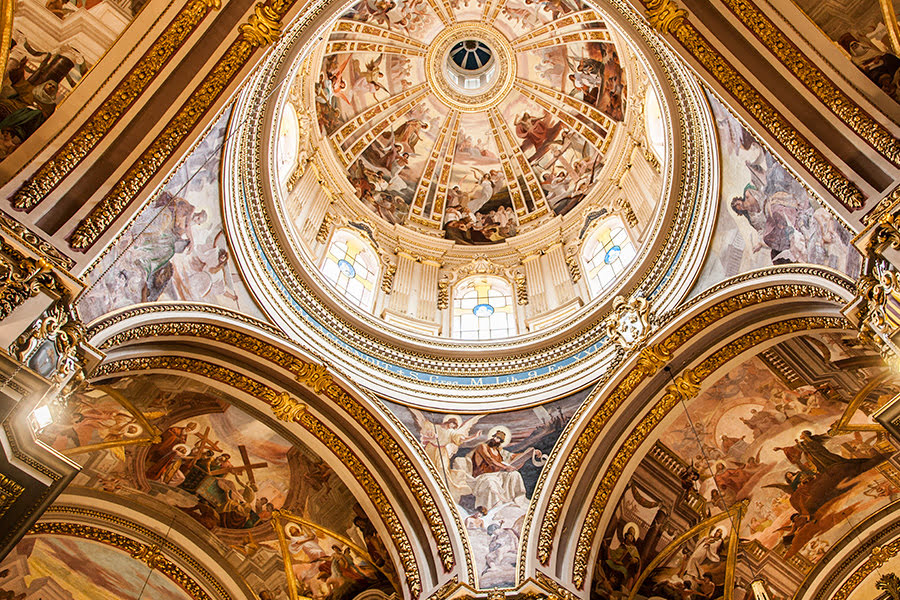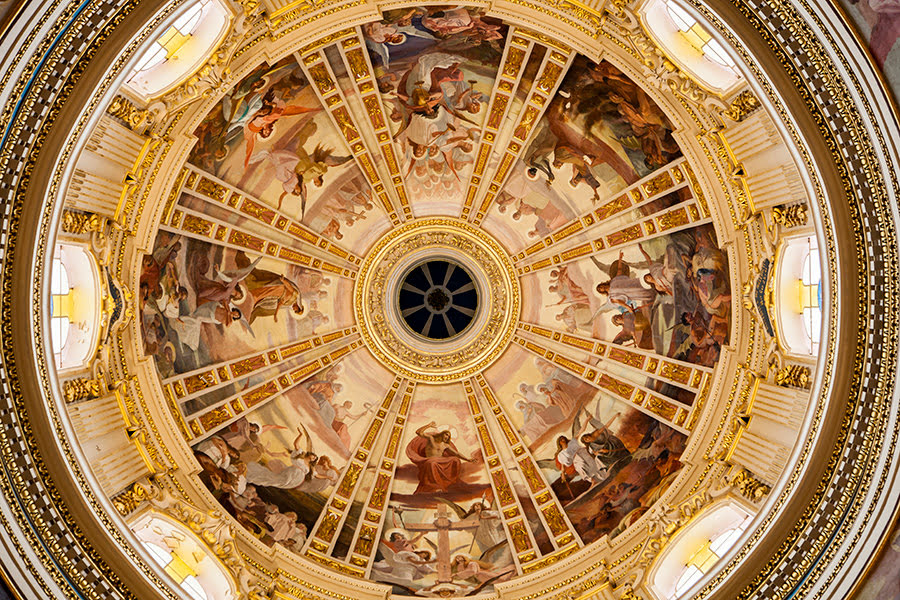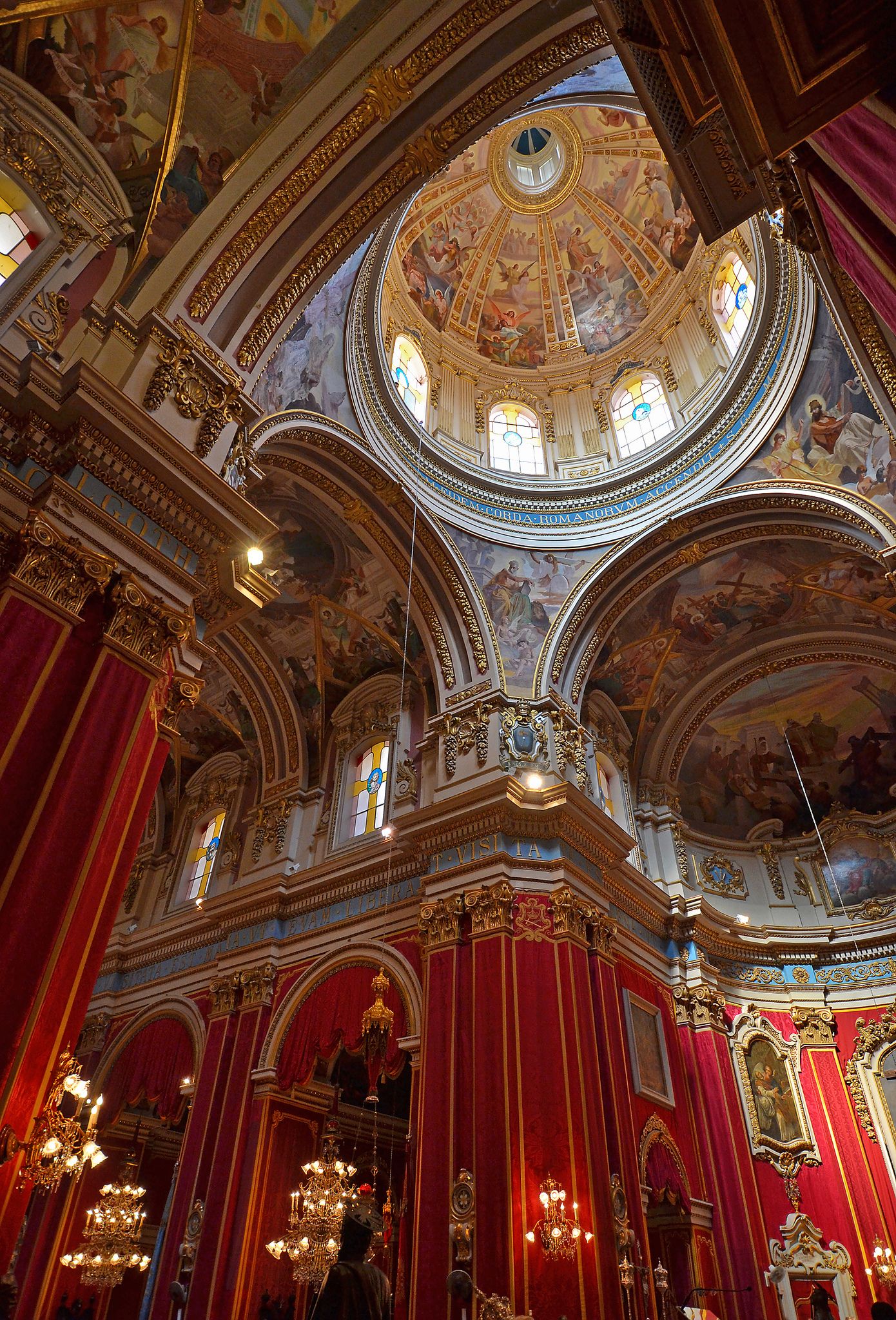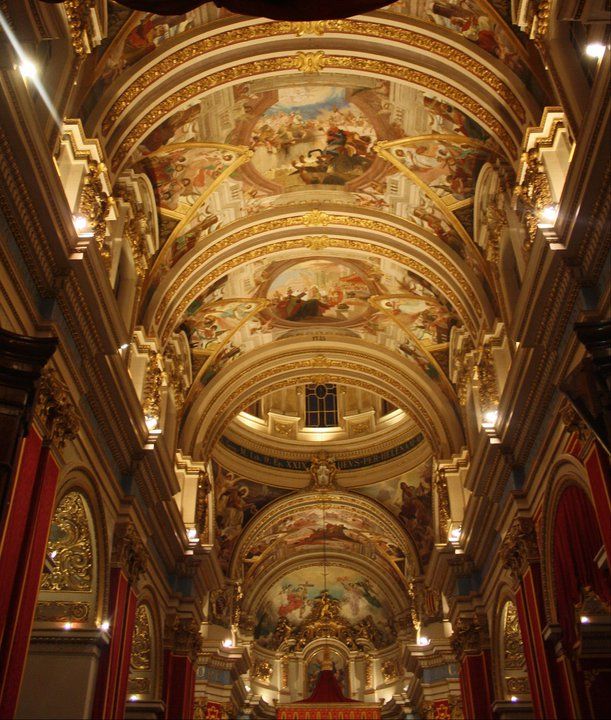Samuel Bugeja - The Restorer
The Eighties And Nineties - The Difficult Challange To Restore The Fresco Paintings Of Virginio Monti At The Saint Helen Basilica
Page 1 | Page 2 | Page 3 |
The artist painter Virginio Monti was well recognized in Italy. He had, in fact, painted the vault over the entrance doorway of the important Church of San Andrea Della Valle in Rome. It was thus soon after the turn of 20th century that Virginio Monti was commissioned by the St Helen Chapter to decorate the entire vault of their Basilica.
During the annual house blessings at my son Joe´s family home in Birkirkara in 1984, the Archpriest Rev. Guzepp Mifsud Bonnici found it the right time to discuss restoration issues. After decades of water ingress through the roofing vault, the Collegiate Chapter had shown the desire to entrust me to restore the damages – rather than continuing to consider foreign specialists. The dome was thus prepared with a wooden platform closure at springing level for safe access under guidance of Joe himself because he is an Architect.
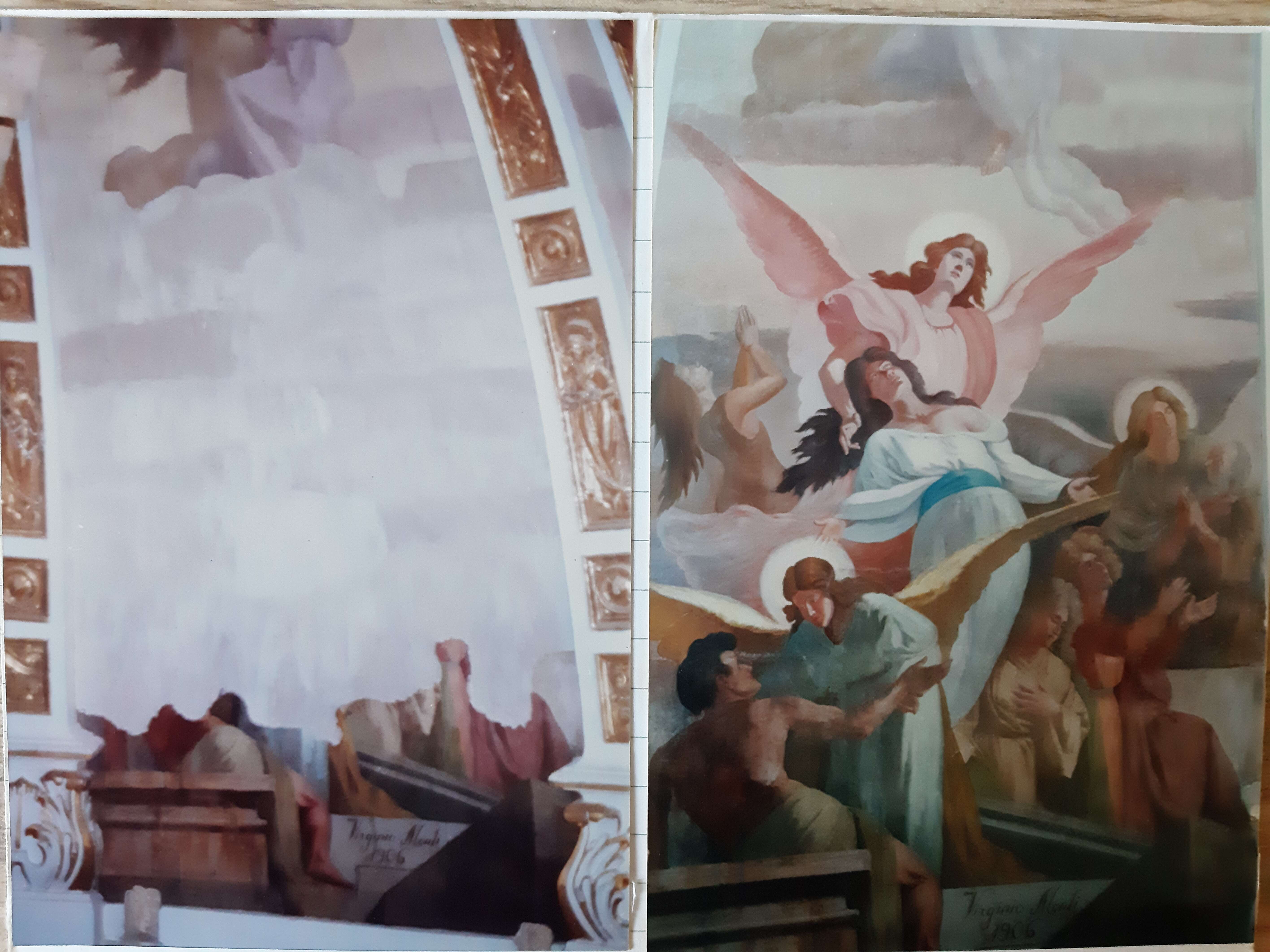
Accompanied by my son Joe and Rev Canon Vincenz Saliba and other helpers, I climbed up the winding staircases leading to dome height to inspect and appraise the damages. I immediately realised the seriousness of the damages and identified two outstanding impressions:
1. The extensiveness of the damage was nothing short of alarming;
2. The excellent artistic quality of Virginio Monti´s work.
My first reaction right there on the wooden staging was to state the extensiveness of the restoration work required – both from a technical perspective to salvage what was left of Monti´s original as well as from the artistic aspect to reinstate artistically the large missing parts. Whole figures and backgrounds were missing completely. These would have to be re-done in complementary and equivalent artistic competence in order to achieve a harmonious and wholesome restoration that respected the original paintings.
On previous important restoration commissions, I was always lucky to enjoy the helping hands of my sons Joe and Gerald. This time I was sure I could rely on their support in order to take up this seemingly insurmountable challenge to restore one of the leading artistic gems in Malta. I plucked up courage and confirmed my willingness to the Rev Chapter to accept the restoration commission.
The first advice was that steps be taken to halt any further water ingress through micro-cracks in the dome masonry structure as well as the vault arches. This was the foremost reason for the enormous damages. Moreover, any reasonable durability of the restored paintings would rely on scrupulous annual maintenance of the external protective water-proofing of the dome and the vault roofing. These annual maintenance works were to take place between July and September of each year.
Water infiltration through the masonry joints had gradually eroded the lime-based joint in-filling. In turn, lime dissolves the plaster bedding on which the fresco painting colours were applied. The whole fresco matrix deteriorated and detached from the masonry stone face. The whole fresco matrix became friable at an accelerated pace resulting in full detachment and loss of entire areas – including the water-based colour film. Large areas were lost in the process, including figures and landscapes. The detached plaster areas were carefully transferred and the colour film attached to a canvas. The missing colour parts were re-done and the whole ensemble re-attached onto the newly prepared durable substrate covering the stonework.
The set of model bozzettos that Monti himself had prepared helped me significantly to achieve the artistic impact of the final restored result. One has to realize the difficulties trying to bridge the scaled differences between small models and full-sized executed paintings that the talented Monti had to adapt during the actual painting execution. These changes were evident when the Chapter showed me the black-and-white photos taken at the time of the completion of the original works. These photos were in possession of a person residing in Australia who had originated from Birkirkara. Mr. Tony Terribile also allowed me the use of photographic material in his possession which threw light on changes that Monti himself had made during execution. The black and white photos, however, could not be helpful regarding the colour hues. These were achieved on a best fit basis within the general hues that Monti had used.
The damages in the main vault were of a completely different nature from those evidenced in the dome, the choir and the transepts. The damages were still serious! Whilst the fresco plaster was still well adhered to the vault stonework, the colour film had disintegrated in many areas and actually powdered off.
What was needed in the main vault was the consolidation of the remaining colour film with the underlying plaster substrate. This was undertaken with the right transparent liquids and sprays (suitable for frescoes) in a consistent and repeated fashion enabling gradual penetration of the adhesive into the substrate plaster. The missing colour film parts were appropriately touched up with colour materials specified for the work.
I need to emphasize that this restoration work would not have been possible were it not for the support given to me by my sons Joe and Gerald. Regarding additional assistance, consisting mostly of handling and securing safe access aloft, I must mention the generous Ninu Aquilina whose support was consistently punctual and exemplary in his contribution.
